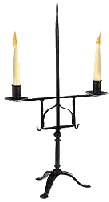
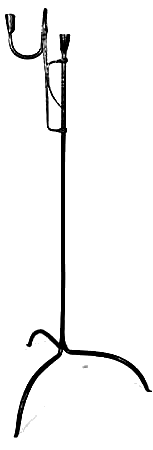
HOME | home
Iron on the Hearth | Iron, Cast and Forged | Cast Iron Cooking 4 | Copperware | Copper and Brassware 2 | Brass Alcohol Stove | Pipe Smoking | Tobacco the Indian Weed | Women's Pipes | Clay Pipe Collection | Pipes2 | pipes3 | Pipes4 | Pipe Tampers | Early Lighting 1 | Early Lighting 2 | Early Lighting 3 | Early Lighting 4 | Early Lighting 5 | Early Lighting 6 | My Lamps | Center Draft Lamps | Center Draft Lamps II | Center Drafts III | Miners lamps | Matches and Match Safes
Early Lighting 5
CandleHolders
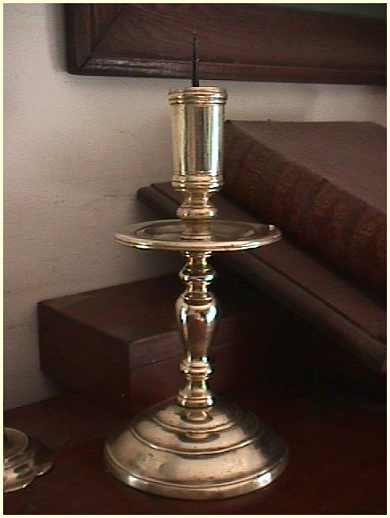
A Large, antique, Pricket Candlestick of Brass that is very handsome

Candleholders and sticks
by Beth Maxwell Boyle
There were many different styles of candleholders crafted to illuminate the house and stable. The types of material used to fashion them in almost as varied but there were traditionally two basic kinds of candlestick. One was the pricket the other the socket type that were common to everyday use in early times. Both types probably were invented about the same time. The pricket candlestick has a simple spike on which the candle is impaled to hold it erect in place so it can be burned. Forged iron, cast brass or bronze are the materials used to craft this type, mostly for ecclesiastical and affluent use. Some copper was also known to be used to make pricket candlesticks. The pricket candlestick was eventually overshadowed by the popularity of the socket candlestick. Today most candlesticks are of the socket type. Modern paraffin candles tend to crumble when placed on a pricket. When I use one I take the point of my scissors and gently bore a hole up into the candle to avoid this crumbling. It is much easier with beeswax and tallow to get one seated. Many candle holders also were fashioned of wood, some could be adjusted up and down as needed. Pewter candlesticks too, were made in both Europe and colonial America.
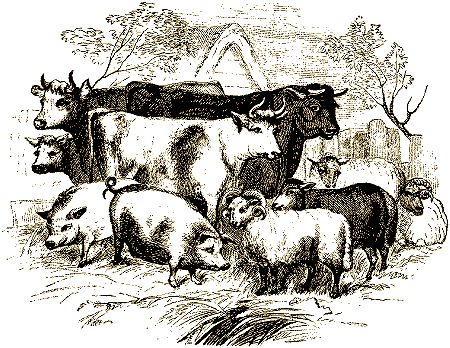
When you examine the first settlement of the colonies you quickly see the rush to find cheap fuel to produce light for the shop and home began as soon as settlement began. It is well documented that the number of head of livestock was still quite low even by1650 in North America. Most farm animals were kept for breeding stock, milk or wool. Domestic animals were not often butchered or rendered for lard and tallow because they were of such value. This made it necessary to import raw tallow and ready made candles at premium prices. Although the colonists discovered bayberry wax, this process was very involved and made candles more expensive than the traditional tallow candles. American settlers soon began using wild animal fats as well for candle making. Bear and deer fat supplemented that rendered from domestic stock. Fish oil, especially along the coast, provided a good source of fuel for lamps at this time. Less wealthy settlers brought with them wrought iron candlesticks and rushlights from the old world.
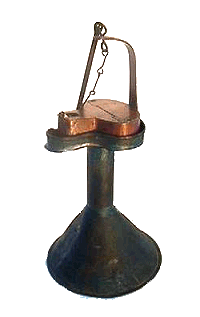
Copper Betty Lamp on Tin Stand
The more affluent brought or imported brass, bronze, or silver candlesticks. Oft times a families' lighting implements were their most prized possessions and even the wealthy tended to treasure a good set of candlesticks or a candelabra. This is probably why so many have survived to this day. Further developments in the evolution of lighting occurred in the century to follow and by the early eighteenth century the slide ejector had been invented. This development allowed the height of the candle to be adjusted. It also made it easier to eject the candle stump from the candlestick. About 1730-1740 the through pusher, ejector was devised. The moveable rod ran the length of the stem ending with a button or nut screwed or riveted to the end of the rod on the underside of the base. I have noted a large number of fine brass candlesticks from England in various collections here in the East fitted with rod push ups. I own a very nice "hog scraper" iron candlestick with the simple side form of push up. I do have in my personal collection, a very early candlestick of bronze that formerly had a side pushup but it long ago was broken off. It is a pedal base candlestick of English or American manufacture given to me by a 90 year old local women. See it pictured below on the left.
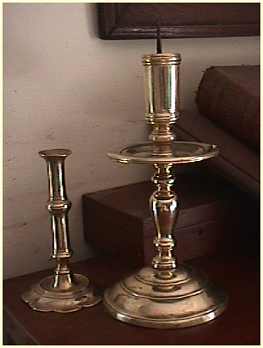
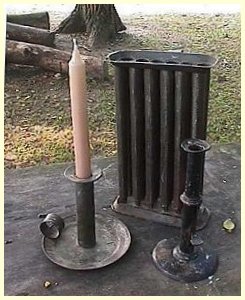
Candlesticks of brass were for the affluent while tin and iron served the average colonist.
"Early wicks were fashioned from strands of peeled Scarpas, a rush-like plant, or of two rolled pieces of papyrus soaked with sulphur. Later, in the eighteenth century twisted cotton strands and then plaited cotton wicks were used. The Frenchman Cambaceres discovered that the plaited wick, as compared to the twisted wick, burned most similarly to the peeled rush wick. When lit, the plaited wick curled over into the outer mantel of the flame where it was consumed, thereby self-trimming itself which caused less smoke. The single plaited wick was the easiest to use for molded candles. Plaited cotton wick could be purchased by the yard by the mid-eighteenth century."
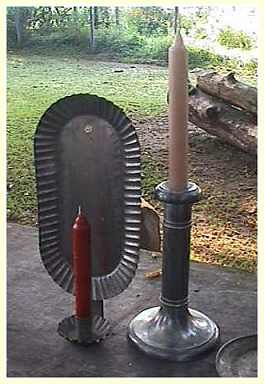
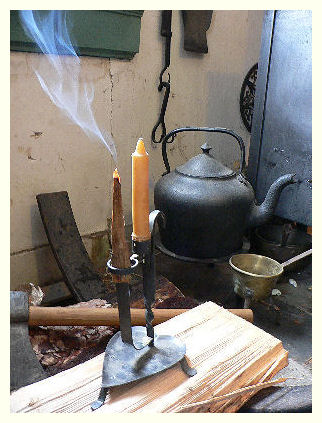
Tin, Pewter and Iron, all reproductions
"To snuff a candle means to trim the wick, not extinguish the flame. Snuffers, also known as wick trimmers and candle shearers, appeared in the late fifteenth century out of the need to trim the wicks of twisted cotton strands. The twisted wicks did not burn off and produced a large, smoking flame if not trimmed periodically. Snuffers look like a pair of scissors but only open beginning at the snuff box. The point on the snuffers was used to straighten the wick before trimming it. Early (sixteenth century) snuffers were made of iron. Brass, bronze, and polished steel were used from the early to mid-eighteenth century. The design of the snuff box varied by time period. The first was heart shaped, then a semi-circle evolving to a fence blade, and variations of the rectangular box. The boxes were decorated and the handles were fancy. One of the last improvements to the snuffer was the addition of a spring which kept the blades in alignment and ensured that the glowing snuff would be safely kept inside the box once it was trimmed. Dousing cones were used to extinguish burning candles."
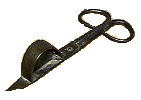
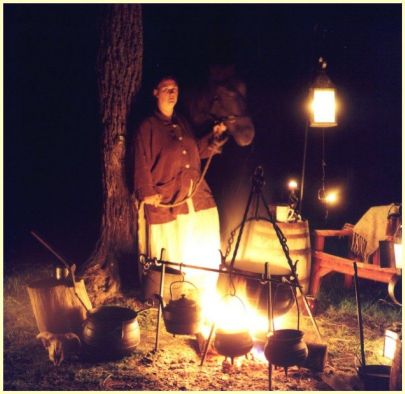
The Author and some of her collection
Great Early Lighting Site!
International Association of Collectors & Students of Historic Lighting
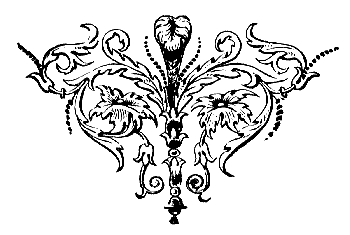
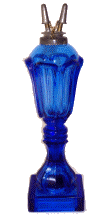
Please note: We are not able to give appraisals of the antiques you plan to sell on eBay! We will help serious collectors when we can with information. Enquiries are welcome from fellow collectors and historians, but please, we do not have the will or expertise to evaluate antiques for resale.
No part of this website may be used for any purpose ( including using images )
without written consent from The Rams Horn
.
